Car Cabins Are Getting to Know You and Your Habits
Vehicles keep an eye on us in an effort to make driving safer.
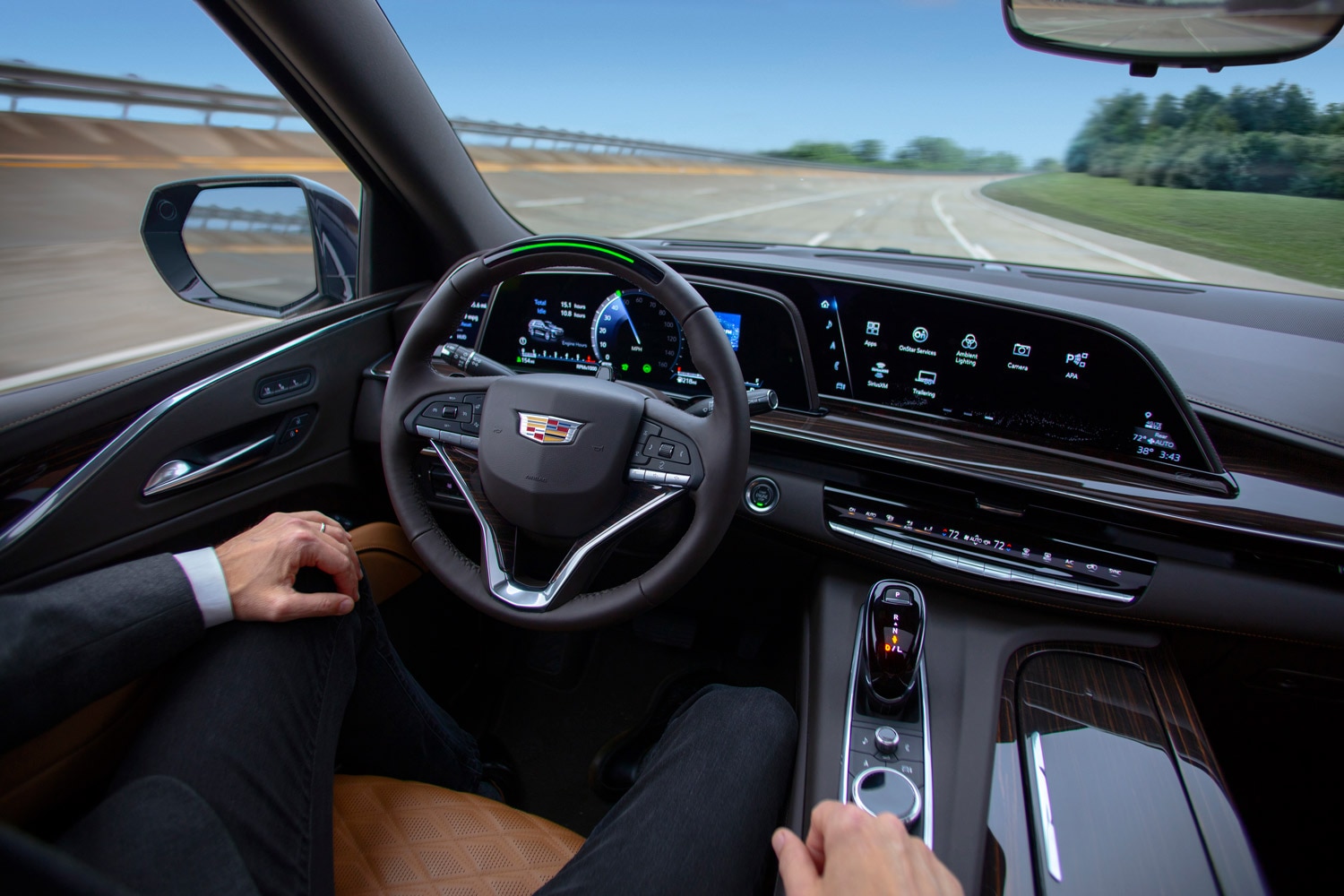 Cadillac
Cadillac
Article QuickTakes:
Your car may be watching you. But don’t worry — for now, it only wants to keep you safe and alert behind the wheel. Someday it may be able to do much, much more. What if your car could read your brainwaves to let you get to your destination without turning a steering wheel or touching a single control?
That may sound outlandish, but given the ways our vehicles already monitor our driving — and considering technology that’s now being tested — it may not be all that far-fetched. In addition to active safety systems that use sensors to look outward from the car to prevent wrecks, an increasing number of sensors are being focused inward, keeping tabs on you, the driver. And many more are on the way.
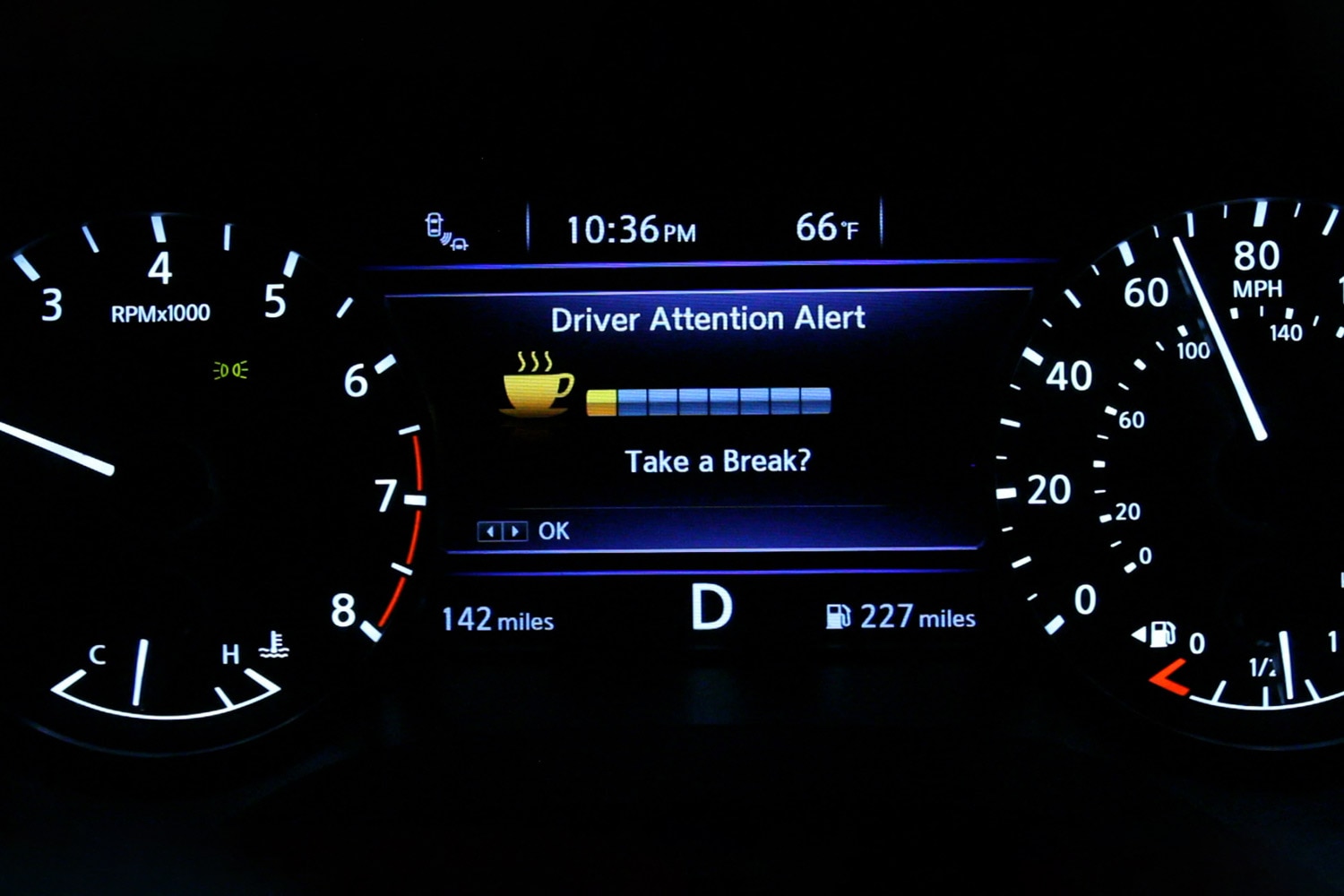 Nissan
Nissan
Time for a Pit Stop
Driver-drowsiness monitors are an increasingly common safety feature. They let drivers know when it may be time to take a potentially life-saving break. The National Highway Traffic Safety Administration attributed 633 deaths to driver-drowsiness-related accidents in 2020 alone.
Detection methods vary, but all of these systems are designed to monitor the driver’s behavior to determine if it matches the habits of someone being inattentive behind the wheel. For example, Nissan’s Driver Attention Alert system tracks steering wheel inputs. If they become erratic in comparison to previously monitored driving behavior, the image of a cup of coffee illuminates on the dashboard and the system prompts you, “Take a break?”.
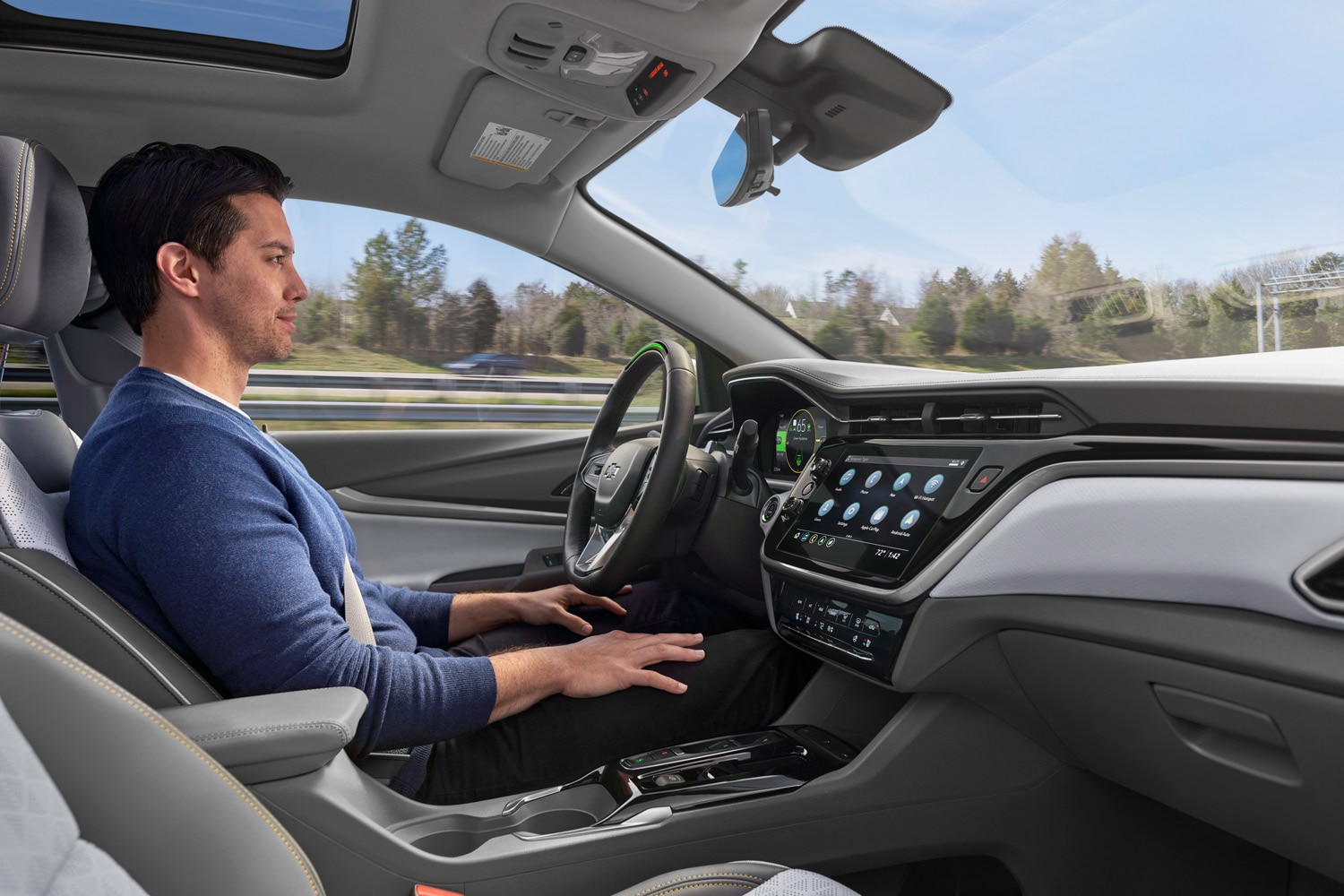 Chevrolet
Chevrolet
Safer Self-Driving
The era of fully self-driving cars is still a ways away, but many automakers now offer semi-autonomous drive systems that eliminate at least some of the hassle of piloting a vehicle. A self-driving aid typically assists with steering inputs, maintains lane positioning, and makes sure you’re a safe distance from surrounding vehicles.
The best of these systems keep careful tabs on the driver, too. General Motors’ Super Cruise, for instance, uses cameras to make certain the driver’s face and eyes are forward during hands-free driving. If Super Cruise detects the driver isn’t paying attention, visual and audio alerts begin. If the driver doesn’t respond, the car will slowly come to a safe stop, turn on the hazards, and have an OnStar representative contact the driver. The system is available in models across the price spectrum too, from the Cadillac Escalade, which is pictured at the beginning of this article, to the Chevrolet Bolt EUV, pictured above.
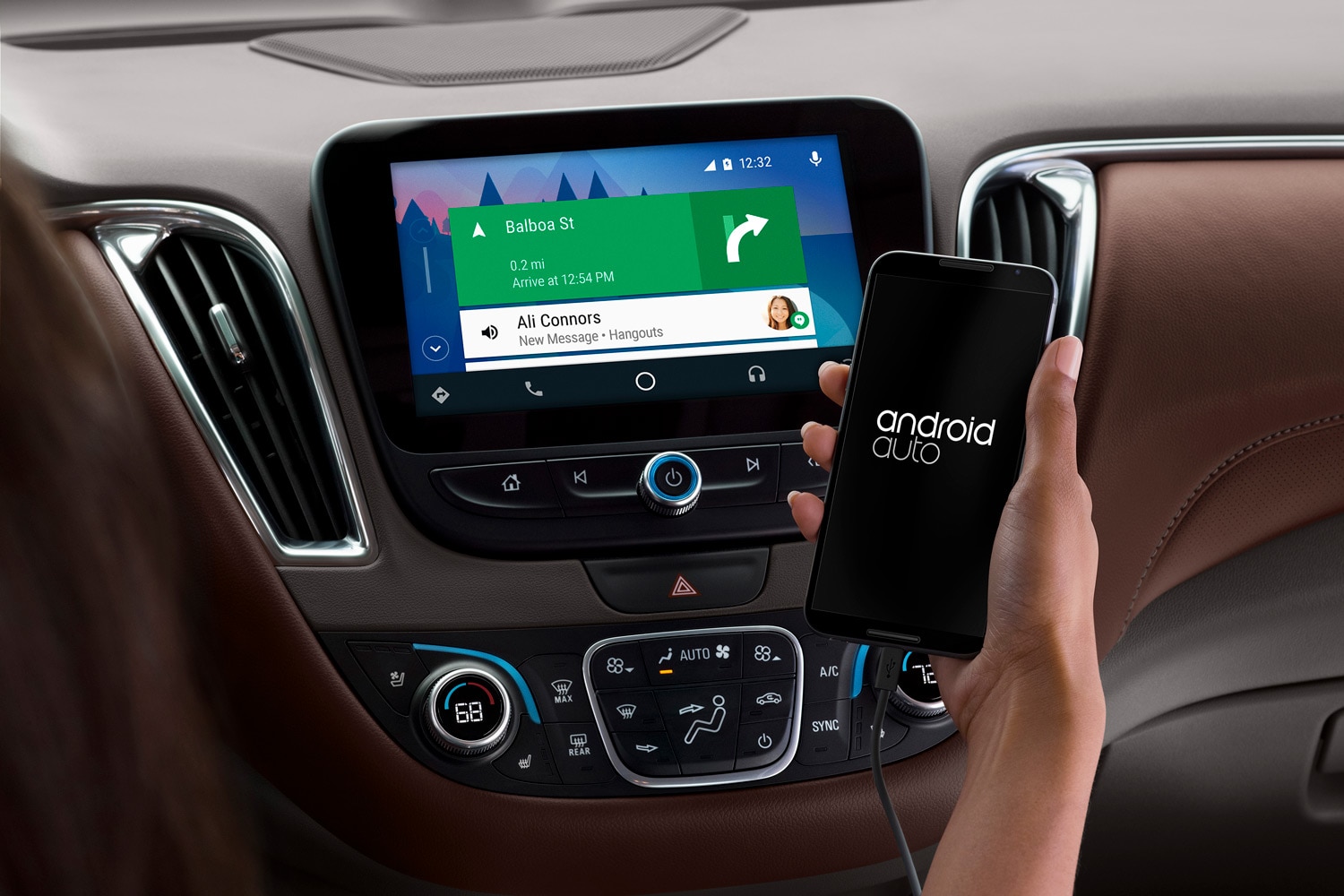 Chevrolet
Chevrolet
Smarter via Smart Phones
Many car shoppers won’t even consider a vehicle if it doesn’t come with Apple CarPlay and Android Auto, not to mention the apps many automakers have developed that can often locate, lock, unlock, or even start your car. Smartphone connectivity can help you play your favorite songs, navigate unfamiliar surroundings, and basically stay in touch with the world while on the road.
This technology can tap into recorded preferences for everything from music to restaurants and can know your current location with real-time accuracy. While this can help you avoid messy traffic snarls and easily find points of interest along your route, it’s not without risks. If your device were to be hacked, and you use one or more connected car apps, it’s not just your personal information that could be compromised — your car could be, too.
 Mercedes-Benz
Mercedes-Benz
Be One with Your Ride
So, your car can tell if you’re sleepy and recommend a charming new restaurant. That’s cute. But what if it could also read your mind?
Enter the Mercedes-Benz Vision AVTR, a concept car inspired by the Avatar films. With its glowing wheels and teardrop shape, the Vision AVTR looks like it came from another planet. It’s meant to showcase how cars and drivers might interact in the future.
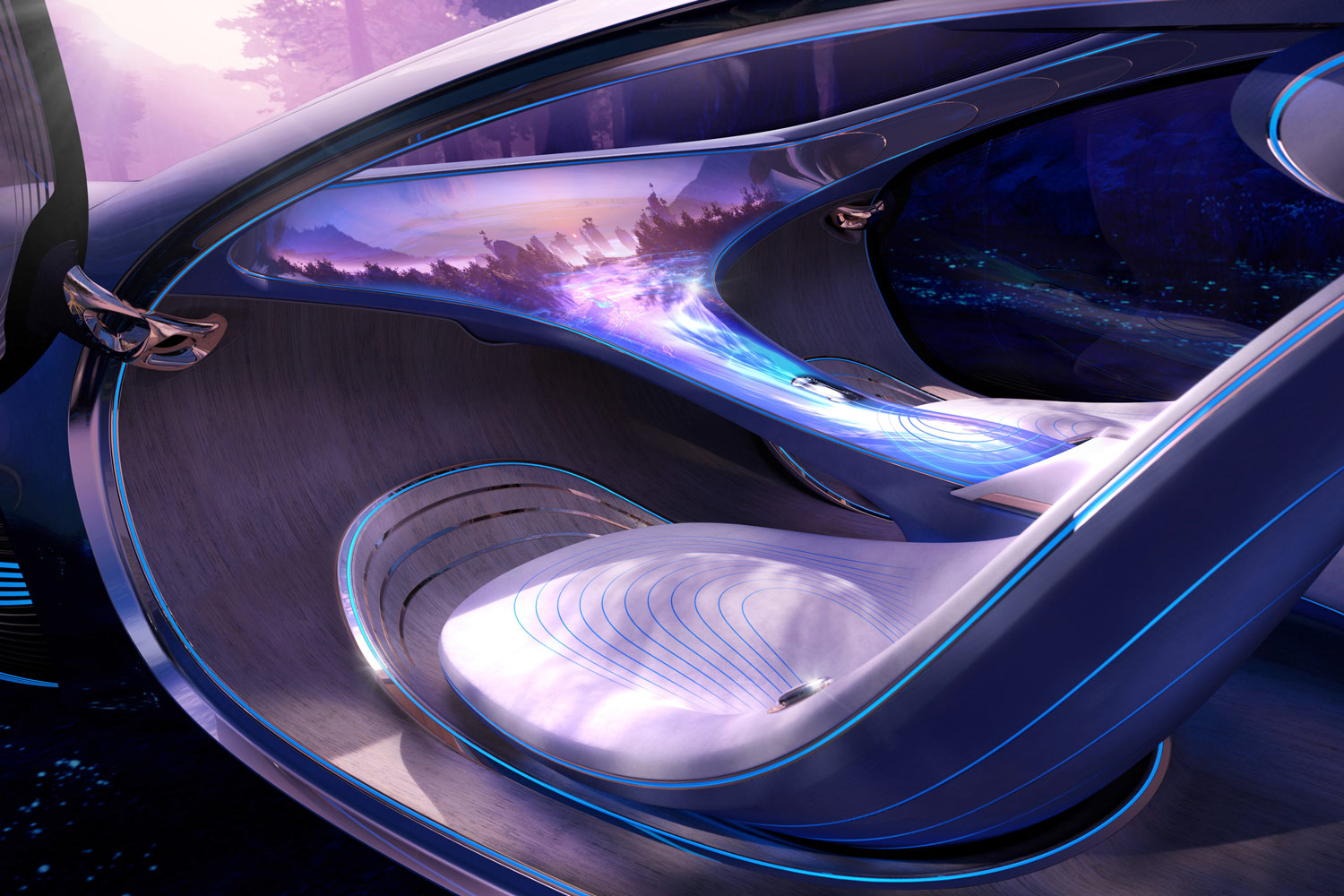 Mercedes-Benz
Mercedes-Benz
Instead of buttons or touchscreens, this battery-powered concept taps into the driver’s brainwaves using what’s called Brain Computer Interfaces. This involves a monitor worn around the driver’s head to record brain activity. The system then projects a series of virtual worlds onto the vehicle's giant curved dashboard and allows testers to use their minds to manipulate the AVTR’S digital universe, doing such tasks as changing day to night or choosing a parking spot.
Of course, this isn’t nearly as complex as zooming safely to your destination via brainpower, but it shows that this fusion of human and vehicle isn’t simply science fiction. As in-car technology is refined, cars are poised to learn even more about you and your habits, and they’re likely to be apt students.



